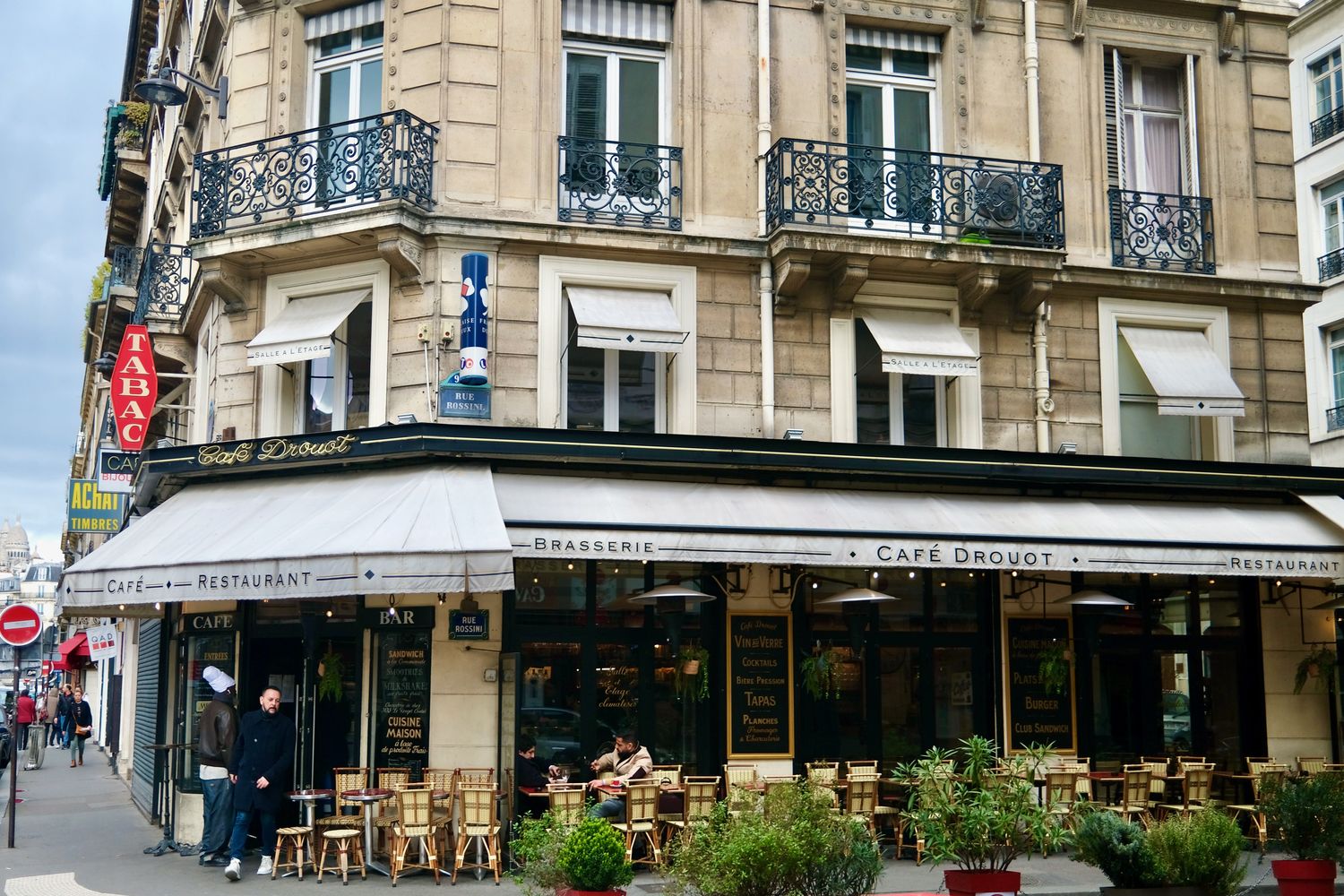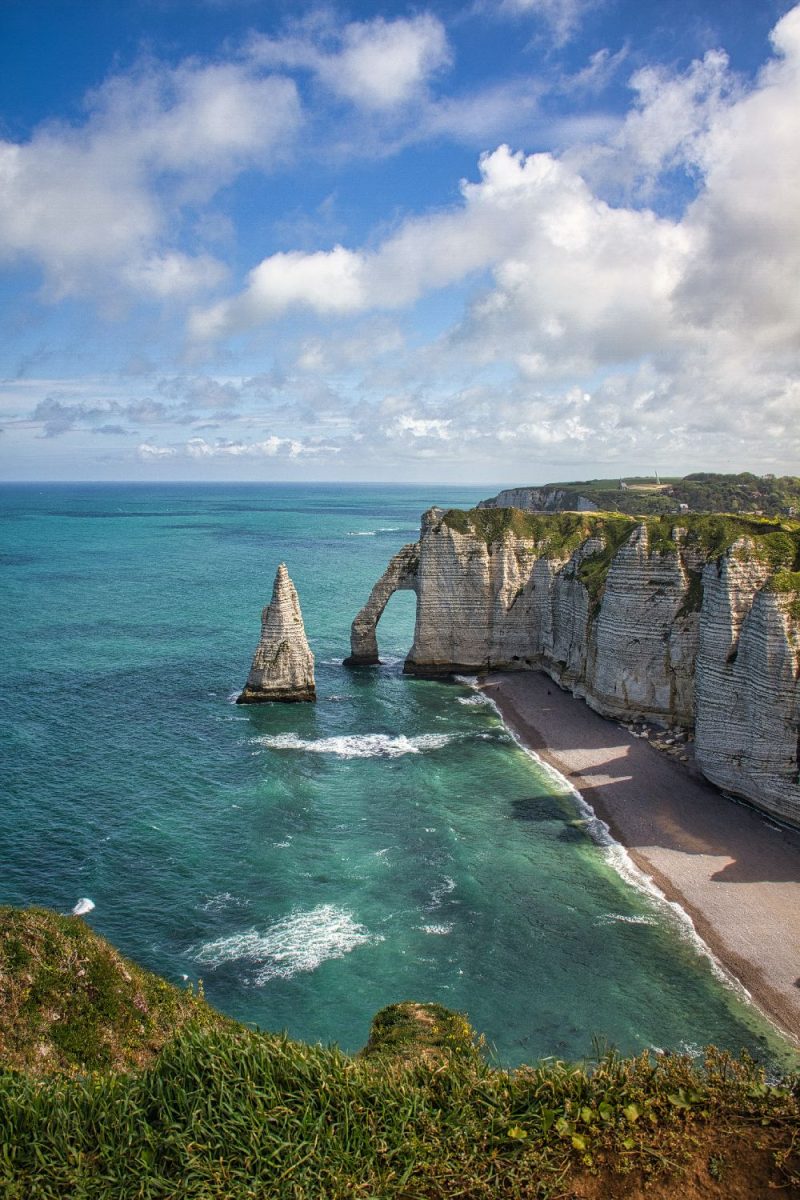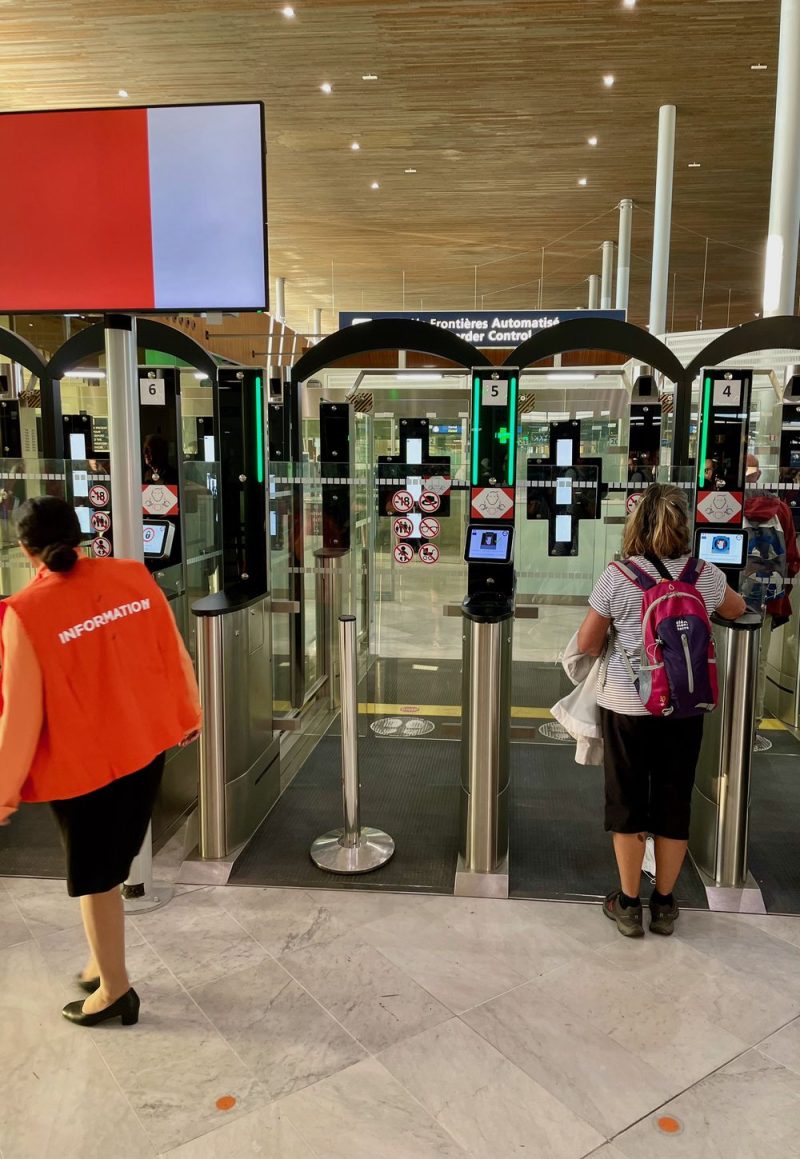Understanding the different types of dining in France can enhance your trip to France and appreciation for French culture. Here, I’ll differentiate between a café, restaurant, bistro, and brasserie.
All too often, places like Café Drouot call themselves a café, restaurant, and brasserie, leading to confusion among travelers. What really is the difference between a café, restaurant, and brasserie in France? Add in bistros to the mix and it’s a sautéed plethora of confusion!

Cafés in France
In the heart of French culture lies the café, a casual establishment primarily serving hot beverages like coffee and tea, alongside light snacks such as pastries and sandwiches. Cafés are typically open throughout the day, providing a laid-back atmosphere where people can read a book or catch up with friends, accompanied by the gentle hum of conversation and the aroma of freshly brewed coffee.
Famous French Cafés
France, particularly Paris, is home to a myriad of famous cafés that have been integral in fostering the country’s café culture, and many of them have welcomed prominent historical figures.
In Paris, Café de Flore is one of the most celebrated cafés, noted for its literary and intellectual clientele, including figures like Jean-Paul Sartre and Simone de Beauvoir. Not too far away, Les Deux Magots is another renowned café, which used to be the favorite haunt of several writers and philosophers, including Ernest Hemingway and Albert Camus.
Le Procope holds a special place in the history of French cafés as it is touted as Paris’ oldest café, having opened its doors in the 17th century. It has welcomed numerous prominent personalities over the centuries, including Voltaire and Benjamin Franklin.
In the Montparnasse district, La Coupole is not just a café but an iconic monument to the artistic history of Paris, frequented by a number of artists and writers in the 20th century. Another noteworthy café is Le Select, a classic venue that has been serving patrons since the 1920s, and was known to be a gathering spot for artists and writers during the interwar period.
These French cafés give you a taste of French history and culture, making a visit to any one of them a rich and fulfilling experience.
Typical Menu of French Cafés
A typical French café menu offers light meals and refreshments, perfect for casual, relaxed dining. Here is an overview of the typical café menu you might find in Paris:
Beverages
Café (Espresso): A small, strong black coffee.
Café Crème: Coffee with steamed milk, similar to a latte.
Café Noisette: Espresso with a small amount of milk.
Thé: Tea, which can be served in various blends.
Chocolat Chaud: Hot chocolate, traditionally made with dark chocolate and milk.
Pastries and Breads
Croissant: A buttery, flaky pastry, often enjoyed at breakfast.
Pain au Chocolat: A square-shaped pastry filled with chocolate.
Baguette: French long bread, sometimes served with cheese or jams.
Tartines: Open-faced sandwiches topped with various spreads.
Light Meals
Quiche: A savory pie filled with a mixture of eggs, cream, cheese, and other ingredients such as ham or vegetables.
Salads: Various types of salads, often including fresh, local ingredients.
Croque Monsieur: A grilled sandwich made with ham and cheese.
Croque Madame: Similar to Croque Monsieur, but topped with a fried egg.
Desserts
Tarte Tatin: An upside-down caramelized apple tart.
Mille-Feuille: A pastry made with layers of puff pastry and cream.
Macarons: Sweet meringue-based confections with a creamy filling.
Snacks
Olives: Often served as an appetizer or snack.
Fromage: Cheese platters featuring a selection of French cheeses.
These offerings represent the quintessential French café menu, designed to provide a delightful and authentic culinary experience, allowing patrons to enjoy a leisurely meal in a relaxed environment.
Restaurants in France
Contrarily, a restaurant in France is an establishment that offers a more extensive menu compared to a café, with a strong focus on serving meals. The environment is more formal, with dining areas meticulously arranged to provide a communal dining experience. The chef and restaurants emphasize finesse, with dishes crafted from quality ingredients, often served in multiple courses, from appetizers to desserts.
Famous French Restaurants
France, a country renowned for its culinary distinction, is home to many famous restaurants that showcase the best of French gastronomy. Many of these French restaurants have been awarded prestigious Michelin stars, denoting their high quality and exceptional cuisine.
Here is a selection of some renowned French restaurants in different regions of France:
Situated in the heart of Paris, Le Meurice, led by chef Jocelyn Herland, is a two-Michelin-starred restaurant offering sophisticated French cuisine. Its luxurious dining room, adorned with crystal chandeliers and marble, provides a lavish backdrop to a sumptuous gastronomic experience.
Nestled in the historic Place des Vosges, L’Ambroisie is a three-Michelin-starred restaurant that serves classic French cuisine. It is lauded for maintaining the highest standards of culinary excellence, with Chef Bernard Pacaud at the helm.
Situated on the French Riviera, Mirazur, under the guidance of Chef Mauro Colagreco, boasts three Michelin stars. Its innovative cuisine, inspired by the sea and mountains, coupled with breathtaking views of the Mediterranean, makes it a world-renowned dining destination.
Named after the legendary chef who revolutionized French cuisine, this iconic restaurant Paul Bocuse in Lyon has maintained three Michelin stars for several decades. It serves classic French dishes, epitomizing the excellence of French gastronomy.
Overlooking the stunning Pampelonne Bay in Saint-Tropez, the three Michelin-starred La Vague d’Or restaurant offers a remarkable feast curated by Chef Arnaud Donckele, who is known for his masterful use of local, seasonal ingredients.
Typical Menu of French Restaurants
A traditional French restaurant, particularly one adhering to the principles of haute cuisine, offers a menu brimming with exquisite dishes, meticulously prepared with high-quality ingredients. While the exact menu depends on regional influences and the chef’s culinary style, here is a glimpse into what you find on French restaurant menus.
Entrées (Starters):
- Foie Gras: A rich, buttery, and delicate dish made from the liver of a duck or goose, often served with toast or fig jam.
- Escargots de Bourgogne: Snails prepared with a garlic and parsley butter.
- Soupe à l’Oignon: A traditional French onion soup topped with melted cheese and a crusty bread.
Plats Principaux (Main Courses):
- Coq au Vin: Chicken slow-cooked in a red wine sauce with mushrooms and onions.
- Bouillabaisse: A Provencal fish stew made with various types of fish and shellfish, served with a side of rouille sauce and crusty bread.
- Ratatouille: A vegetable medley stew, illustrating the flavors of Provence with ingredients like zucchini, eggplant, and bell peppers.
- Duck Confit: A savory dish featuring duck leg slow-cooked in its fat until tender and plated with a side of vegetables or potatoes.
- Steak Frites: A classic French dish consisting of a steak paired with French fries, often with peppercorn or béarnaise sauce.
Fromages et Salades (Cheeses and Salads):
- Fromage: A cheese platter showcasing a selection of regional French cheeses.
- Salade Niçoise: A refreshing salad from Nice, with ingredients like tuna, hard-boiled eggs, olives, and anchovies.
Desserts:
- Crème Brûlée: A creamy custard topped with a brittle layer of caramelized sugar.
- Tarte Tatin: A caramelized upside-down apple tart.
- Mousse au Chocolat: A rich and airy chocolate mousse, a perfect end to a meal.
- Profiteroles: Choux pastry balls filled with cream and topped with chocolate sauce.
Wines and Beverages:
- French Wines: A curated selection of wines from various regions of France, complementing the flavors of the dishes served.
- Champagne: The iconic French sparkling wine, often enjoyed as an aperitif or with desserts.
In addition to the dishes mentioned, many restaurants offer daily specials, featuring seasonal or local ingredients, allowing patrons to enjoy a vibrant and evolving culinary experience.
Bistros in France
A bistro, or bistrot, on the other hand, presents a blend of casual and formal dining. Initially, these were small establishments offering affordable, simple meals, often served quickly. In contemporary times, bistros have retained a semblance of their simplicity but have incorporated a more diverse menu, often inclusive of traditional French dishes. The atmosphere in a bistro is more intimate and relaxed compared to a restaurant, yet somewhat more formal than a café.
Famous French Bistros
Bistros are a vital part of the French dining landscape. Here is a list of some famous bistros in France that have garnered acclaim:
Le Comptoir du Relais (Paris): In Saint-Germain-des-Prés, this bistro is known for its delightful terrace and offers an exquisite menu curated by Chef Yves Camdeborde. It’s a place where Parisians gather for a quintessential bistro experience.
Bistrot Paul Bert (Paris): This renowned bistro in the 11th arrondissement offers classic French cuisine in a traditional bistro setting, complete with wooden tables and vintage posters. It is particularly famous for its steak frites and generous cheese platter.
Chez Denise (Paris): Also known as “La Tour de Montlhéry”, this historic bistro has been serving hearty meals since the 1960s. It is known for its generous portions and a vibrant, bustling atmosphere.
Le Bistrot d’Antoine (Nice): In the heart of Nice, this bistro offers a blend of traditional and modern cuisine. The menu features a delightful range of dishes, with a particular emphasis on local and seasonal ingredients.
Le Chardenoux (Paris): An establishment that has been in operation since 1908, Le Chardenoux offers a vintage bistro atmosphere with a menu that combines traditional French dishes with contemporary culinary techniques, curated by Chef Cyril Lignac.
Daniel & Denise (Lyon): In the gastronomic city of Lyon, this bistro, helmed by Chef Joseph Viola, offers a menu rich with traditional Lyonnaise dishes. It’s a must-visit for foodies in Lyon.
Le Pantruche (Paris): This bistro, located in the 9th arrondissement, is known for its modern take on classic French bistro cuisine. Chef Franck Baranger, who has a background in working with Michelin-starred establishments, brings a touch of finesse to the vibrant and inventive menu.
L’Ami Jean (Paris): A Basque-inspired bistro where Chef Stéphane Jégo offers hearty dishes with a generous spirit. The lively atmosphere and robust flavors make it a local favorite.
Typical Menu of French Bistros
Bistros in France usually offer a menu that combines both the traditional and the modern, with a focus on hearty dishes and a relaxed, casual dining atmosphere. Here’s an idea of what you find on the menu at a typical French bistro:
Starters (Entrées):
- Terrine de Campagne: A rustic pâté made with a mixture of coarsely chopped meats, often served with pickles and crusty bread.
- Salade Lyonnaise: A hearty salad consisting of frisée lettuce, lardons (small strips of pork fat), a poached egg, and croutons.
- Moules Marinières: Mussels cooked in a white wine and garlic broth, often served with French fries.
Main Courses (Plats Principaux):
- Bœuf Bourguignon: A classic French stew made with beef slow-cooked in red wine with carrots, onions, and mushrooms.
- Cassoulet: A rich, slow-cooked casserole containing meat (usually pork sausages, goose, duck, or lamb) and white beans.
- Confit de Canard: Duck leg slow-cooked in its own fat, resulting in tender meat and crispy skin, usually served with potatoes.
- Steak Frites: A quintessential bistro dish featuring a steak served alongside crispy French fries, accompanied by peppercorn or béarnaise sauce.
Sides:
- Ratatouille: A Provençal stewed vegetable dish made from zucchini, eggplants, bell peppers, onions, and seasoned with a mix of herbs.
- Gratin Dauphinois: A traditional French dish made from thinly sliced potatoes baked in milk or cream.
Desserts:
- Tarte au Citron: A tangy lemon tart, often topped with a light dusting of powdered sugar or a layer of meringue.
- Crème Caramel: A rich custard dessert with a layer of soft caramel on top, a classic French dessert loved by many.
Wines and Beverages:
- House Wine (Vin de Maison): Bistros often offer a selection of house wines which are affordable and pair well with the menu.
- French Beers: A selection of regional beers, which can be a refreshing accompaniment to the meals.
Cheese:
- Plateau de Fromages: A cheese platter with multiple French cheeses, often served with bread and sometimes accompanied by a small salad or nuts.
The essence of a bistro menu lies in its simplicity and heartiness, providing a welcoming and relaxed dining experience while enjoying dishes that are both comforting and delectably French.
Brasseries in France
Lastly, a brasserie is a type of restaurant that serves single dishes and other meals in a relaxed setting. The term brasserie translates to “brewery” in English, which is a nod to their origin as establishments serving beer brewed on the premises.
Nowadays, French brasseries offer alcoholic beverages and have an extensive food menu, often serving hearty, traditional French meals. They are known for their vibrant atmosphere and are typically open for longer hours compared to other dining spots, offering service from early morning till late in the evening.
Famous French Brasseries
Here are some famous brasseries in France that have a noteworthy reputation:
Brasserie Lipp (Paris): Situated in the Saint-Germain-des-Prés area, Brasserie Lipp has been a Parisian institution since 1880. It has hosted numerous intellectuals and literary figures over the years and is renowned for its classic Alsatian dishes.
La Coupole (Paris): A quintessential Montparnasse brasserie, La Coupole has been a gathering spot for artists and intellectuals since the 1920s. Its grand Art Deco interiors and expansive menu serve a mix of traditional and contemporary dishes.
Brasserie Bofinger (Paris): Established in 1864, Bofinger is considered the oldest brasserie in Paris. It is known for its beautiful Belle Époque interior and a menu that highlights traditional Alsatian and French cuisine, including an excellent selection of seafood.
Brasserie Georges (Lyon): This grand establishment in Lyon boasts a magnificent setting with towering ceilings and opulent décor. Offering a diverse menu with a focus on fresh, regional produce, it is a favorite for a luxurious dining experience.
Le Flandrin (Paris): Situated in the 16th arrondissement, Le Flandrin has undergone several transformations since its inception in 1931. It combines modern elegance with historical charm, offering a menu that blends classic and contemporary French cuisine.
Brasserie Le Nord (Lyon): One of the renowned Bocuse brasseries in Lyon, Le Nord offers a menu that embodies the richness of Lyonnaise cuisine, with dishes crafted from high-quality, local ingredients, providing a gastronomic treat to diners.
Grand Café Capucines (Paris): A historic establishment located near the Palais Garnier, it showcases a spectacular interior complete with mirrored walls and chandeliers.
Typical Menu of French Brasseries
French brasserie typically offers a vast and varied menu, encompassing many classic French dishes. Here’s an insight into what you might find on a typical brasserie menu in France:
Starters (Entrées):
- Quiche Lorraine: A savory tart filled with a creamy mix of eggs, cream, cheese, and lardons.
- Pâté de Campagne: A rustic meat pâté served with crusty bread and pickles.
- Salade de Chèvre Chaud: A salad topped with warm goat cheese, often served on toasted bread with a drizzle of honey or a balsamic reduction.
Main Courses (Plats Principaux):
- Choucroute Garnie: A classic Alsatian dish featuring sauerkraut cooked with a medley of meats like pork, sausages, and sometimes fish.
- Moules Frites: A popular dish of mussels served with a side of golden French fries, usually offered with various sauce options like marinière or Roquefort.
- Steak Tartare: A dish of raw minced beef, seasoned with capers, onions, and spices, often served with a raw egg yolk on top.
- Croque-Monsieur: A grilled sandwich of ham and cheese, topped with béchamel sauce, and further grilled until golden and crispy.
Sides:
- Pommes Frites: Classic French fries, crispy and golden, often served with a selection of dips.
- Ratatouille: A vegetable stew made from a blend of zucchini, eggplant, bell peppers, and tomatoes, embodying the flavors of Provence.
Desserts:
- Profiteroles: Soft pastry balls filled with cream or ice cream and topped with a rich chocolate sauce.
- Tarte Tatin: A caramelized apple tart, a delightful end to a meal.
Cheeses and Salads:
- Fromage Blanc: A fresh, soft cheese often served with honey or fruit compotes, offering a lighter dessert option.
- Salade Verte: A simple green salad, offering a refreshing and crisp contrast to the hearty main courses.
Wines and Beverages:
- Bière Pression: Draft beer, a staple in brasseries, offering a selection of local and regional beers.
- Vin de Maison: House wine, usually available in red, white, and rosé, offering a well-paired complement to the meal.
Brasseries often have daily specials and seasonal offerings, enhancing the menu with fresh and locally sourced ingredients. This vibrant and flexible menu style, coupled with a relaxed and sociable atmosphere, is what makes dining in a brasserie a quintessentially French experience.
By distinguishing between French dining options, you can better navigate the French restaurant scene and choose the type of setting that works best for you!





